This article was co-authored by Lynn Kirkham. Lynn Kirkham is a Professional Public Speaker and Founder of Yes You Can Speak, a San Francisco Bay Area-based public speaking educational business empowering thousands of professionals to take command of whatever stage they've been given - from job interviews, boardroom talks to TEDx and large conference platforms. Lynn was chosen as the official TEDx Berkeley speaker coach for the last four years and has worked with executives at Google, Facebook, Intuit, Genentech, Intel, VMware, and others.
This article has been viewed 16,945 times.
Body language is a powerful form of communication. It is a skill that can be used to influence the opinion of people around you, without talking or making contact with them. Upwards of 70% of communication is said to be conveyed through body language, making it a powerful tool in understanding the feelings of those around you.
Steps
Noticing Facial Expressions
-
1Appreciate the number of facial expressions. Expressions can relay a variety emotions, six of which are common to all cultures: [1]
- Happiness, defined by rounded eyes, raised cheeks and a big smile.
- Sadness, which is visible in the areas of the eyes and mouth.
- Disgust, which includes lowered eyebrows and eyelids, a raised upper lip and wrinkled nose.
- Surprise, which shows in the wide open eyes, raised brow and open mouth.
- Anger surfaces in a lowered brow and penetrating, persistent stare.
- Fear shows itself in the area around the eyes and an open mouth.
-
2Make eye contact. The eyes have been described the windows to the soul. People can observe much about a person through their eyes. When you make eye contact with another, it can make others feel more connected to you. This action suggests honesty, and that you are an approachable and confident. Too much eye contact, however, can be perceived as aggressive or hostile. Making eye contact during 50 to 60 percent of the conversation is considered appropriate.
- If this amount of eye contact makes you uncomfortable or feels awkward, practice speaking while making eye contact with family or friends.
- Be aware of your blink rate. Excessive blinking is usually means that you are uncomfortable or feeling stress.
Advertisement -
3Watch movements of the mouth. The way the mouth appears may seem rather straight forward; a person who is happy smiles, while a person that does not smile is not happy. It is not always that simple however.
- Lip biting can indicate stress, anxiety or feelings of worry.
- Pursed lips can indicate distaste or disapproval.
- Covering of the mouth, other than for covering a cough, can indicate that one is concealing a smirk or smile.
- Curving of the corners of the mouth can be used to perceive emotion. When the corners of the mouth curve up, this can indicate happy or positive feelings. The curving down of the corners of the mouth can be indicate feelings of sadness or disapproval.
Watching the Hands, Arms, and Legs
-
1Consider arm and hand gestures. Many things can be perceived when one views a person's arms and hands.
- With outreached arms and palms facing up, this communicates openness, acceptance and trustworthiness. If there is a movement of the arms in jerking motion, this is a statement that the person is feeling powerless.
- With outreached arms and palms facing down, this portrays a sense of authority. If this action takes place during a conversation, it typically means the person you are communicating with is firm in their belief of what is being said.
- Placement of a hand over the heart means that the comments being made are heartfelt and the speaker wants to be believed.
- Finger pointing is used as an authoritative gesture, however when used when talking to a peer, it can imply a confrontational spirit and arrogance.
- Rubbing hands together typically indicates excitement and anticipation of a positive nature.
- Putting hands together in a steeple fashion portray feelings of self-assurance and confidence.
-
2Use positive and reflective cues: Such signs include your finger stroking your chin or putting your hand on your cheek[2] .
- Observe other signs that cast you in a thoughtful light. Look away in a contemplative manner after being as a question, then make eye contact when you are answering.
- Tilting your head, with your eyes focused in an upward manner, is also a sign of reflection.[3]
- Observe other signs that cast you in a thoughtful light. Look away in a contemplative manner after being as a question, then make eye contact when you are answering.
-
3Be aware of signs that can come across negatively:
- Crossed arms can be indicative of a person feeling defensive or closed off.
- Standing with hands placed on the hips can be a sign of confidence and control or, on the negative side, a sign of aggressiveness.
- The clasping of hands behind one's back can be a sign of anxiety, boredom or anger.
- Tapping of fingers on a desk or surface can relay feelings of boredom or frustration.
-
4Give a strong handshake. While it should not be crushingly strong, grasping a hand in a firmly, with a few up and down shakes, while making eye contact will show confidence. This is important for both men and women.
-
5Noting the placement of a person's legs. As with arm and hand gestures, your legs can convey a message that you are not even aware of.
- Crossed legs and shifting them a way from a particular person can indicate a closed off feeling, or distaste for another.
- A crossing of the ankles, typically in men (as this gesture is considered ladylike in women) can be perceived as holding back information.
Observing Body Posture and Stance
-
1Focus on a powerful image. By incorporating some of the following ideas, you can portray yourself in a positive and powerful light:[4]
- Keep your back straight, with relaxed shoulders. Be sure not to look rigid.
- Position your body parallel to the person with who you are speaking, to show that you are engaged. Lean in slightly, to show your interest.
- Try to match the body language of the person you are speaking with. This will indicate you are sincere and amiable to what is being said.
-
2Display power in your stance. Taking on power poses like sitting with your legs up on your desk, or standing with your arms positively outstretched can increase the level of testosterone, which is linked to confidence. It also reduces the level of cortisol, which is a stress hormone.
Noting Gestures and Movements
-
1Take note of unconscious body behavior. Many gestures that we are not even aware of can give away clues to feelings and level of interest.
- Clenched fists can be a sign of harmony or agreement; on the negative side, it can signal anger, or aggression.
- Displaying a thumbs up or thumbs down is common for conveying that all is good, or alternatively, bad.
- In America, the "okay" sign is a universal positive sign that all is good. The V-sign is also a positive sign for peace.[5]
-
2Be aware of the pitch of your voice. The tone and pitch of your voice can express your level of confidence and comfort. High pitched voices are typically less confident and nervous, which can make the speaker seem less empathetic. Try some vocal exercises, like humming with your lips closed, to help lower the pitch of your voice to a more normal tone.
-
3Make use of hand gestures. There have been studies that show a link in the brain between our vocal processes and hand gestures. When used in combination, speech has been found to improve, with less use of the "ummm" and "uhhh" that can be typical when one is not speaking with complete confidence. [6]
Expert Q&A
Did you know you can get expert answers for this article?
Unlock expert answers by supporting wikiHow
-
QuestionHow do you show strong body language?
 Lynn KirkhamLynn Kirkham is a Professional Public Speaker and Founder of Yes You Can Speak, a San Francisco Bay Area-based public speaking educational business empowering thousands of professionals to take command of whatever stage they've been given - from job interviews, boardroom talks to TEDx and large conference platforms. Lynn was chosen as the official TEDx Berkeley speaker coach for the last four years and has worked with executives at Google, Facebook, Intuit, Genentech, Intel, VMware, and others.
Lynn KirkhamLynn Kirkham is a Professional Public Speaker and Founder of Yes You Can Speak, a San Francisco Bay Area-based public speaking educational business empowering thousands of professionals to take command of whatever stage they've been given - from job interviews, boardroom talks to TEDx and large conference platforms. Lynn was chosen as the official TEDx Berkeley speaker coach for the last four years and has worked with executives at Google, Facebook, Intuit, Genentech, Intel, VMware, and others.
Public Speaking Coach
References
- ↑ http://www.speechmastery.com/facial-expression.html
- ↑ https://www.mindtools.com/pages/article/Body_Language.htm
- ↑ https://www.mindtools.com/pages/article/Body_Language.htm
- ↑ https://www.inc.com/peter-economy/18-ways-to-make-your-body-talk-the-language-of-success.html
- ↑ https://www.washingtonpost.com/opinions/from-churchill-to-libya-how-the-v-symbol-went-viral/2011/03/18/AFzPiYYB_story.html
- ↑ https://www.researchgate.net/publication/239586939_Hand_gestures_in_speech_studies_of_their_roles_in_social_interaction



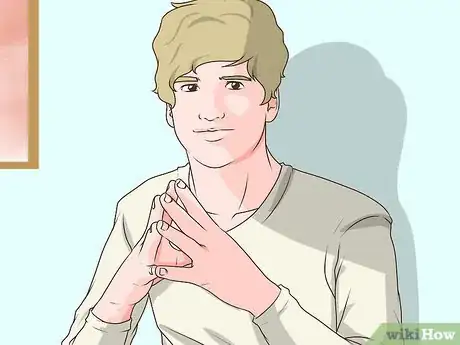






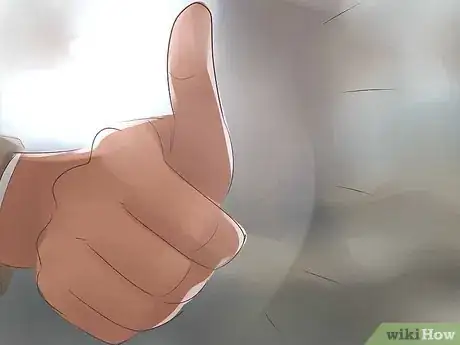
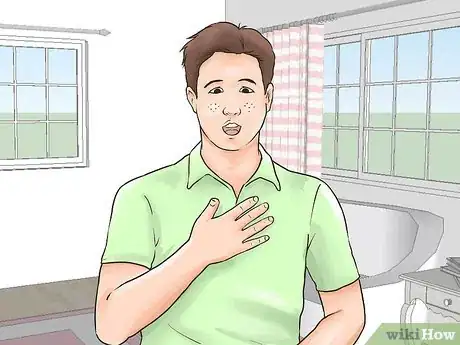
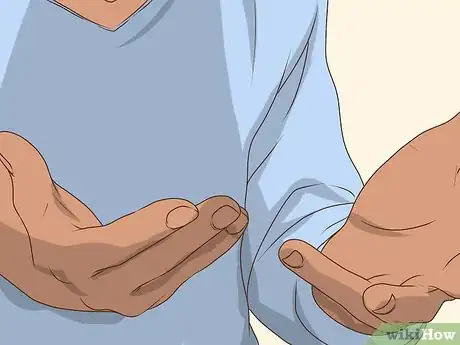










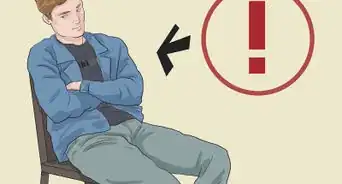

















































Medical Disclaimer
The content of this article is not intended to be a substitute for professional medical advice, examination, diagnosis, or treatment. You should always contact your doctor or other qualified healthcare professional before starting, changing, or stopping any kind of health treatment.
Read More...